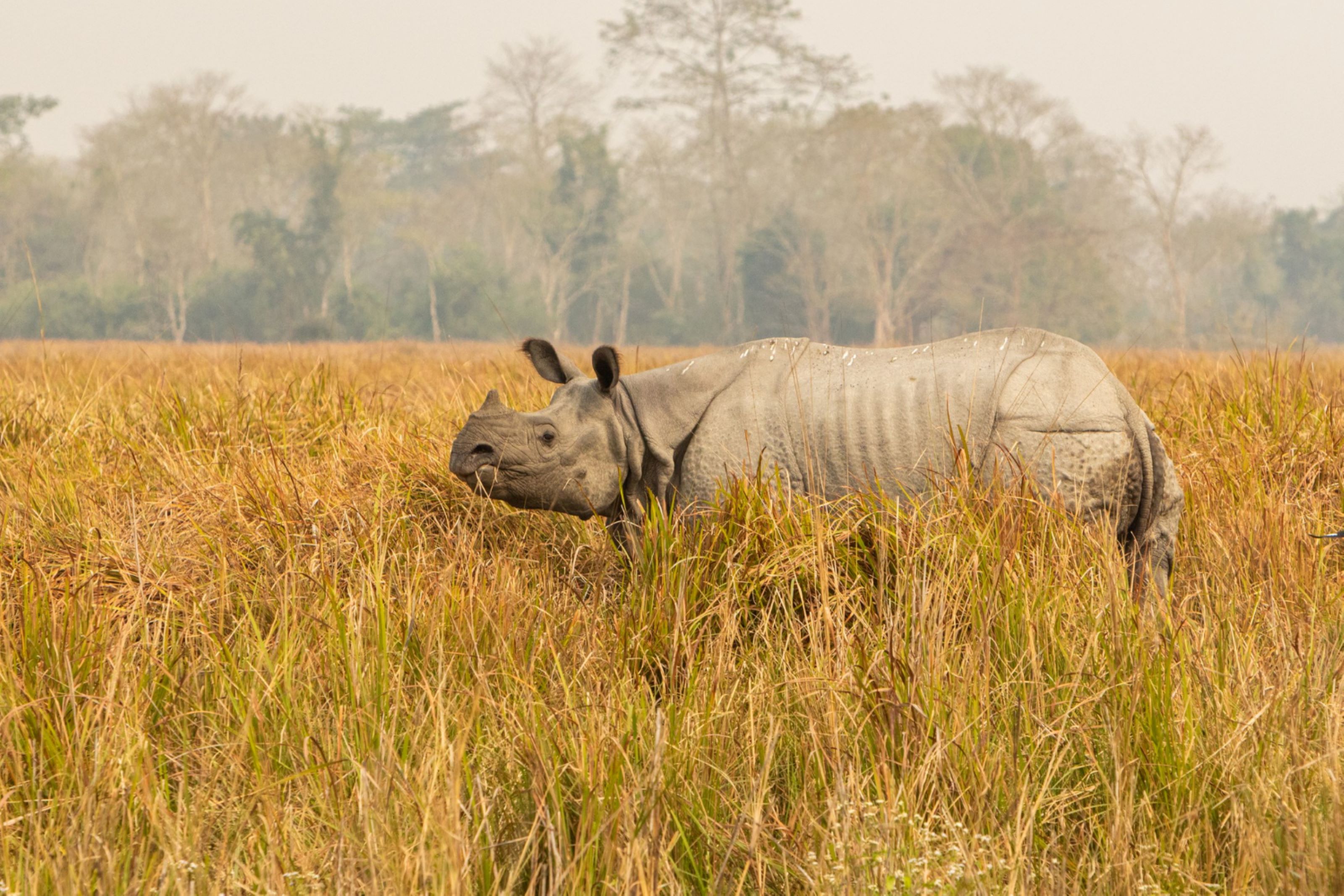India has only 2.4 percent of the world’s land area, its share of the global species diversity is an impressive 8.1 percent. That is what makes our country one of the 12 mega diversity countries of the world. In fact, it is not wrong to say that India is the biological capital of the Earth. Nearly 45,000 species of plants and twice as many of animal have been recorded from India. There are various places in India where animals including those that are endangered, are preserved and they are also used as a tourist attraction for visitors. Every year millions of tourists visit the wildlife sanctuaries of India. Wildlife sanctuaries attract tourists, and they generate revenue through entry fees, guided tours and other related services. There are many activities organized for tourists to interact with the animals like safaris, birds watching and even interacting with animals in zoos.
SOME NATIONAL PARKS IN INDIA
There are almost 500 sanctuaries in India. In India, ecologically unique and biodiversity-rich regions are legally protected as biosphere reserves, national parks and sanctuaries. India now has 14 biosphere reserves, and 90 national parks. The largest national park of India are Hemis national park which is located in Ladakh, spanning over 4,400 square kilometers. It’s renowned for its snow leopard population. And Desert national park which is located in Rajasthan it covers 3,162 square kilometer and protects species like the Great Indian Bustard. In many cultures, tracts of forest were set aside, and all the trees and wildlife within were venerated and given total protection. Famous examples are Gir National Park, which is home to the Asiatic lions, and Kaziranga National Park, known for its wide variety of animals. There parks show how important sanctuaries are in protecting India’s rich wildlife and nature.
(1) KAZIRANGA NATIONAL PARK
Kaziranga National Park was established on 1 June 1905 and on 11 February 1974 it was declared as national park. It is located in the Golaghat, Sonitpur, and Biswanath and Nagaon districts of the state of Assam. It hosts two-thirds of the world’s Indian rhinoceroses. The rhinoceros’s population in Kaziranga national park is 2,613 and it consist 1,641 adults’ rhino and 385 calve. Kaziranga national park has grown into a UNESCO world heritage site. The park has expanded over time, with recent additions bringing the total area to over 1302 sq.km. In 2007, Kaziranga was declared a tiger reserve under project tiger highlighting its importance for tiger conservation.
a. Advantages and disadvantages
The park is an important home for the endangered one-horned rhino and other animals. Protecting it has helped the rhino population grow again after it was almost wiped out. National Park also provides employment and revenue for local communities.
The construction of roads like the NH 37 highway restricts animal movements. Some wild animals like rhino, elephant, and even tiger can damage crops and property leading to conflicts with local communities and resentment to words conservation efforts. Many animals die due to flood prone area. Many local communities experience restriction on park expansion.
(2) RANTHAMBORE NATIONAL PARK
Ranthambore Park was established in 1955, it is located in Sawai Madhopur district in the southeastern part of Rajasthan. In 1973 it became one of the tiger reserves projects aimed at protecting the tiger population. Ranthambore was officially declared a national park in 1980. The park is spread over an area of 1,334 sq.km. The park is known for being one of the largest and most renowned national park in northern India and is a popular tiger reserve. Ranthambore national park is home to more the 40 kinds of mammals, 320 kinds of birds and 40 kinds of reptiles.
Ranthambore park offers a variety of activities, it is renowned for its tiger sightings and peoples can explore Ranthambore fort, a UNESCO world heritage site. In the 2023-24 period, Ranthambore national parks saw over 6.54 lakh tourists both domestic and foreign visitors.
a. Advantages and disadvantages
It was one of the first research established under India’s project. Ranthambore has became very popular for tiger safaris. Tourist from all over come to see tigers in their natural home. Because of this, more people are learning how important it is to take care of tigers and their forest.
The park has faces challenges with illegal hunting, capturing feeling of wild animals. While the parks have a healthy tiger population, there have been instances of tiger deaths, including some due to illness and accidents. Due to lack of proper safety arrangements, many tourists have met with accidents example, a forest ranger names Devendra Chaudhary was killed in tiger attack on 11 May and a seven years old boy named kartik suman mauled to death near the Trinehra Ganesh Temple on April 16.
b. Administrative issue
Ranthambore national park has some management problems. It does not get enough money there are not enough workers and it needs better facilities to take good care of the park and its animals.
(3) SUNDARBAN NATIONAL PARK
Sundarban national park is situated in the state of west Bengal at the mouth of the Ganga-Brahmaputra delta on the Bay of Bengal. It was established on 1973 as a tiger reserve but designated as a wildlife sanctuary in 1977 and on 4 May 1984 it was declared as a national park. It was recognized as a UNESCO world heritage site in 1987. Sundarban is renowned for being the world’s largest mangrove forest and it is particularly famous for its population of Royal Bengal Tiger. It has 58 mammal species, 55 reptiles’ species and around 248 bird’s species, according to Sundarban affairs. Sundarban national park is very big, with a land area of about 1,330 sq.km. It is the central part of the larger Sundarban tiger reserve, which is about 2,585 sq.km. The biggest area is Sundarban biosphere reserve, which includes the park and nearby regions and it cover over 9,000 sq.km.
a. Advantages and disadvantages
Mangrove forest protects nearby area from strong storm, cyclones and high sea waves and also helps from soil erosion. Mangrove forest also play a crucial role in carbon fixation, the unique landscape attracting tourists, offering opportunities for eco-tourism and responsible travel.
The presence of tiger and other wildlife in the Sundarban leads to conflict with humans, especially those who depend on the forest for their livelihood. Rising in sea level causes harm in agriculture and fresh water resources which causes people to migrate from their home which also affects financial stability.
b. Different activities in Sundarban national park
They offer various activities for tourists, like boat safaris in which they provide opportunities to spot wildlife, watch towers to observe tiger as they come to during water. There is canopy walk which allows tourists to explore the mangrove forest and they also offer birds watching.
c. Administrative issue
The Sundarban Park face several administrative challenges, including poaching, deforestation and habitat destruction. A major issue is the shortage of staff which limits the ability to manage and protect its resources and lack of coordination also effect decision making.
CONCLUSION
Till now, we have come to know that because of wildlife sanctuaries and national parks, many animals and forests have been saved and because of these parks and sanctuaries save many animals that were on the verge of extinction. It also helps in increasing India’s revenue and it also help in promoting tourism in India. Additionally, national parks contribute to scientific research, climate regulation and offer recreational and cultural value. National Park gives us special chances to learn about nature and how to protect it for future. It is also very helpful for children to learn about nature and to protect it. Park creates jobs in various sector including park management, tourism and related industries. Many parks save many historical sites for tourists. Protection of animals and plants is being incourage and because of this the coming generations will also learn to protect nature life. Nature is our very important parts of our life the why we should have to save it.
To know more about travel and tourism and want us to plan your best travel experience with us call or WhatsApp at +91-9733533000 or you can visit https://www.marinetoalpine.com


